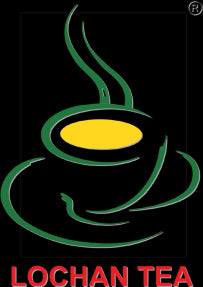

Hawaii Grown Tea – Status Report
By Elyse Peterson
After several years of small batch processing and marketing from niche tea retailers, Hawaii Grown Tea has become a known name in the tea world. Many tea lovers have had the unique opportunity to taste the sweet terroir of the islands. In 2014, a Hawaii Grown Tea made by Bob Jacobson of Hawaii Rainforest Tea was the first tea to win a North American Tea Conference Gold Cup Medal for the United States. The market is ready and excited to welcome Hawaii Grown Tea, but as expect, time is still needed as industry infrastructure is developed to meet the market demands.
Industry Update
In a 2011 [market feasibility study) (www.ctahr.hawaii.edu/oc/freepubs/pdf/tea_2011.pdf] published by the University of Hawaii the Hawaii Grown Tea industry is profiled. It is now 2015 and not much has changed outside of some major state supported development projects that have put thousands of tea seedlings in gardens across the state. It is not known exactly how many tea gardens exist in the state as information from these projects are not disclosed and many gardens are being developed under the radar. It seems as if most of the development has occurred over the past few years, coinciding with the development of the US Tea Growing movement which includes major players in Mississippi, Alabama, Texas, and California. It will not be for a few more years until the gardens and teas will come into the market, but don’t be surprised to see a rush of promising tea producers.
The tea gardens of Hawaii that have gained the most traction in the market are Mauna Kea Tea, Hawaii Rainforest Tea, Onomea Tea, Hawaii Tea & Company, and Big Island Tea. Distribution spans across the globe serving as some of the highest priced products of high end brands like Harrods. Many of these gardens are able to sustain their business through retail sales of their tea via local farmers markets and e-commerce websites. Unfortunately, local distribution stops at the farmers market as the tea growers find it hard to enter markets such as Whole Foods that stock locally blended “Hawaii style” teas, which are Chinese and Indian imports blended with Hawaiian fruits and flavors. The issue of price competition will always remain a challenge for tea growers in Hawaii because costs are so much higher in the United States and commodity prices of tea still remain below $5 per kilogram. To overcome this growers have focused on mastering their art of cultivating and processing tea similar to high quality tea producers in China. Instead of trying to bring down their production costs they are bringing up the value of their tea.
Hawaii Terroir
The terroir of Hawaii has not yet been fully discovered. Tea tasters and buyers all agree that there is a Hawaii essence to all the Hawaii Grown Teas they have experienced, but no descriptors have been tagged to its terroir. Plant cultivars are still being developed for each garden due to Hawaii’s vast variety of microclimates. Outreach efforts at the University of Hawaii have empowered tea growers to collect a wide variety of plant material and germinate multiple generations of tea seeds to select the best performing plants for their environment. This process of plant selection has taken about 10 years for each garden and is going to be what differentiates the teas from all the gardens. Once a “mother plant” is selected cuttings can be rooted to speed up the propagation process. Some farmers have even mastered the technique of air layering which is a process of rooting cuttings directly on the mother plant. As the industry is still young and most of the cultivars of Hawaii have yet to be developed it is still premature to say there is a specific terroir of Hawaii. Elevations of gardens range from 200 feet to 3000 feet and gardens span across dozens of Hawaii’s microclimates.
Future
It is still very early to say exactly where the Hawaii Grown Tea industry will go and how it will perform in the international tea market. Early popularity of the first teas released into the market indicate the there is much more room and excitement for other growers to enter. One of the most opportune markets, the United States, is still learning the value of tea and is beginning to pay the proper price for high quality tea. The growing demand for local products will only help with the inclusion of Hawaii Grown Tea. Consumers excited to try these teas should not be surprised to pay upward of $2 a gram to taste the sweet, tropical terroir of Hawaii. If you would like to learn more about Hawaii Grown Tea you can stay connected with the Hawaii Tea Society (www.hawaiiteasociety.org/) or contact me directly at elyse@tealet.com.













